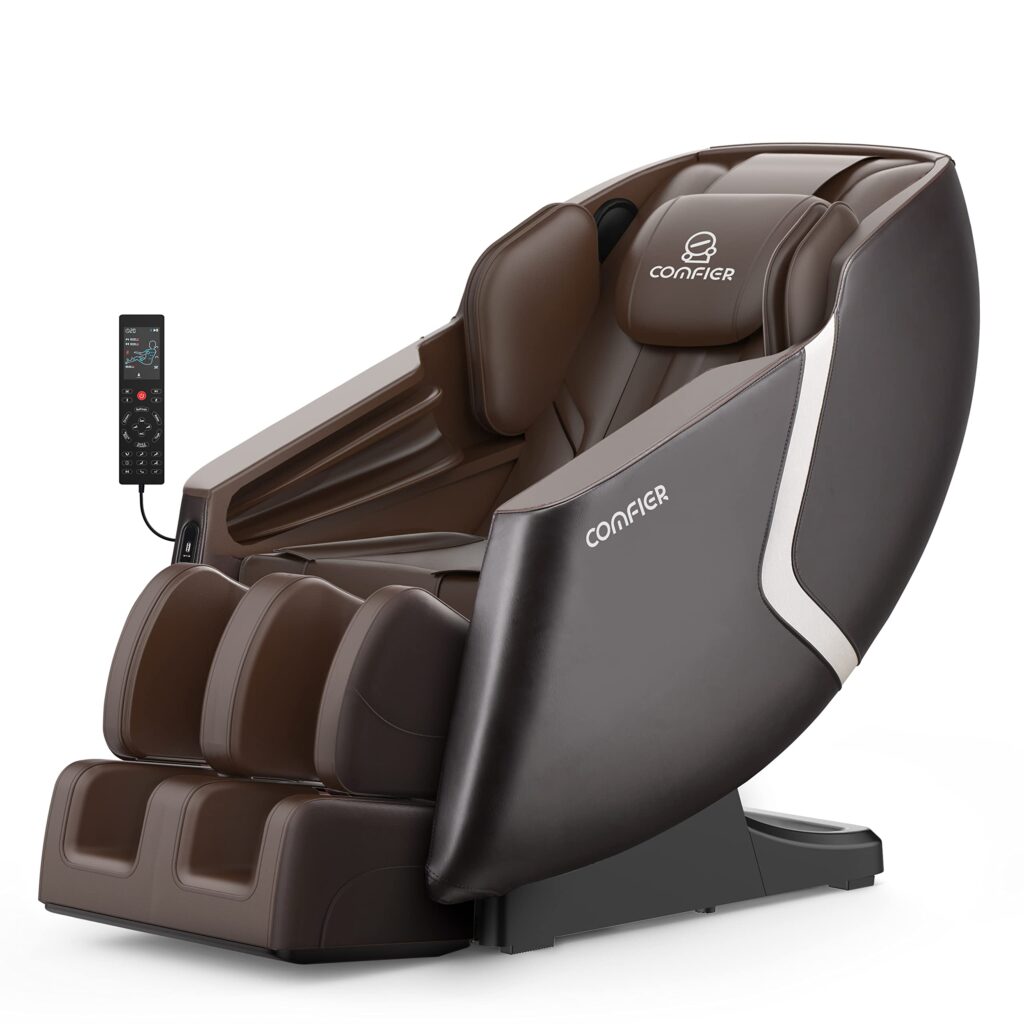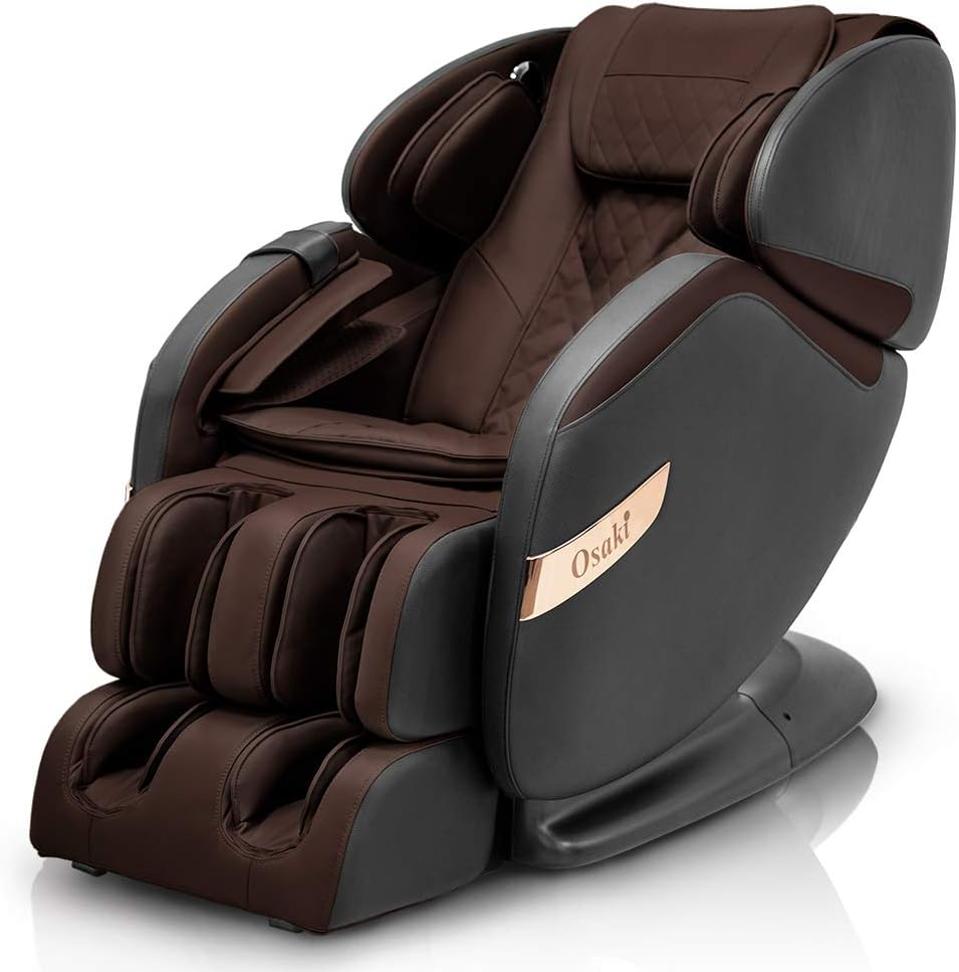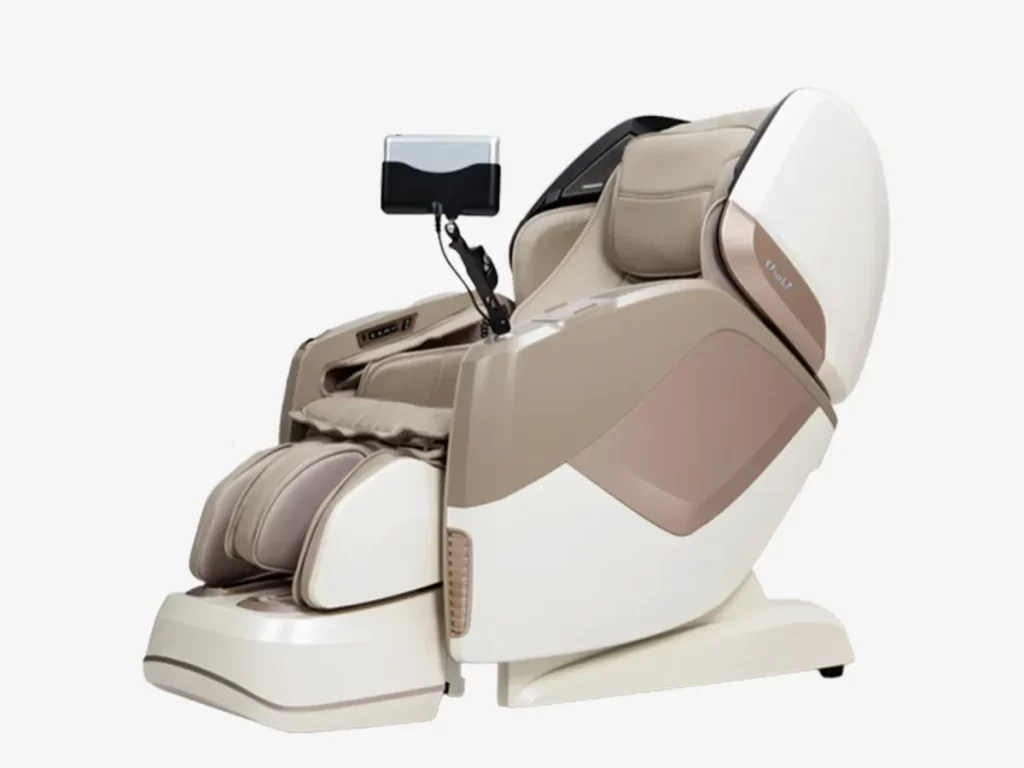
Can You Use a Pacemaker With a Massage Chair? we are surrounded by a plethora of electronic devices designed to enhance our comfort and well-being. One such device is the massage chair, a popular tool for relaxation and therapeutic relief. On the other hand, we have medical devices like pacemakers, which are life-saving instruments implanted in individuals to regulate their heart rhythms. The intersection of these two devices raises a pertinent question: Can individuals with pacemakers safely use massage chairs?
Understanding the relationship between pacemakers and massage chairs is of paramount importance for several reasons:
- Safety First: Pacemakers are critical devices that ensure the heart functions correctly. Any external factor, including electromagnetic interference from devices like massage chairs, could potentially disrupt their operation. Ensuring the safety of pacemaker patients when using such chairs is crucial.
- Increasing Popularity: With the rising popularity of massage chairs for home and commercial use, the likelihood of individuals with pacemakers encountering them is higher than ever. Being informed about potential risks and precautions can prevent unwanted complications.
- Informed Decisions: Knowledge empowers individuals to make informed decisions. For those with pacemakers, understanding the dynamics between the device and massage chairs allows them to enjoy the benefits of relaxation without compromising their health.
Understanding Pacemakers and Massage Chairs

Pacemakers: Definition and Purpose
A pacemaker is a small, battery-operated medical device that’s implanted beneath the skin, usually near the collarbone. Its primary function is to regulate the heartbeat. The device achieves this by sending electrical impulses to the heart, ensuring it maintains a consistent and appropriate rhythm. Pacemakers are typically prescribed for individuals who have arrhythmias—irregular heart rhythms—which can lead to complications like fatigue, fainting, or even life-threatening conditions if left untreated.
Massage Chairs: Functionality Explained
Massage chairs are specialized chairs equipped with internal electronic motors and gears designed to create massage-like movements. These movements can range from simple vibrations to complex kneading, tapping, and rolling motions. The primary goal of a massage chair is to provide relaxation, alleviate stress, and reduce muscle tension. Advanced models come with features like heat therapy, zero-gravity reclining, and body scanning technology to customize the massage experience for the user.
Potential Concerns of Using a Massage Chair with a Pacemaker
The intersection of pacemakers and massage chairs brings forth some concerns
- Electromagnetic Interference (EMI): All electronic devices, including massage chairs, emit electromagnetic fields. There’s a potential risk that the electromagnetic interference from these fields might disrupt the functioning of a pacemaker. Even though modern pacemakers are designed to shield against common sources of EMI, and massage chairs are built to minimize EMF emissions, the concern remains valid.
- Physical Pressure: Some massage chairs exert significant pressure on the body. For individuals who’ve recently had a pacemaker implanted, there’s a risk that this pressure could cause discomfort or even dislodge the device, especially if the massage chair is used aggressively.
- Induced Arrhythmias: While rare, there’s a possibility that the intense relaxation and changes in blood pressure from a deep massage could trigger arrhythmias in susceptible individuals, even if the pacemaker is functioning correctly.
Benefits of Massage Chairs for Individuals with Pacemakers

For individuals with pacemakers, the thought of using a massage chair might initially be met with apprehension due to potential risks. However, when used correctly and safely, massage chairs can offer a plethora of benefits that can enhance the quality of life for these individuals.
Potential Benefits of Using Massage Chairs
- Promotion of Relaxation: One of the primary benefits of massage chairs is the promotion of relaxation. The rhythmic motions and gentle pressure can activate the body’s parasympathetic nervous system, leading to a reduction in stress hormones and an overall feeling of calm.
- Relief of Muscle Tension: Massage chairs are adept at targeting specific muscle groups, kneading away knots and tension. For individuals with pacemakers who might experience muscle stiffness due to limited physical activity or other health conditions, this can be particularly beneficial.
- Improved Blood Circulation: The motions of a massage chair can stimulate blood flow, ensuring better oxygenation of tissues and more efficient removal of toxins. Improved circulation can aid in faster recovery from muscle soreness and enhance overall cardiovascular health.
- Enhanced Sleep Quality: Regular use of a massage chair can lead to better sleep quality. The relaxation and muscle tension relief can make it easier for individuals to fall asleep and stay asleep.
- Mental Well-being: Beyond the physical benefits, the relaxation and stress relief provided by massage chairs can have positive effects on mental well-being. Reduced stress levels can lead to improved mood, better cognitive function, and a more positive outlook on life.
Maximizing Benefits While Ensuring Safety
- Customizable Settings: Opt for massage chairs that allow customization. Adjusting the intensity, type, and duration of the massage can ensure a comfortable and beneficial experience.
- Regular Short Sessions: Instead of long, infrequent sessions, consider shorter, more regular massages. This can provide consistent benefits without overexerting the body.
- Positioning: Ensure that the area where the pacemaker is implanted is comfortably positioned. Some chairs allow for specific zones to be turned off, ensuring no direct pressure on the pacemaker site.
- Hydration: Drinking water post-massage can help flush out toxins released during the session, maximizing the benefits of improved circulation.
- Consultation: Regularly consult with healthcare providers about the frequency and type of massages that are beneficial. They might offer insights based on individual health conditions and the specific type of pacemaker.
Compatibility of Massage Chairs with Pacemakers

Massage Chairs and Pacemakers: Are They Compatible?
In general, massage chairs and pacemakers are not inherently incompatible. Most modern massage chairs are designed to minimize electromagnetic field (EMF) emissions, and contemporary pacemakers are shielded to protect against common sources of electromagnetic interference (EMI). However, the compatibility largely depends on the specific make and model of both the massage chair and the pacemaker, as well as individual health factors.
Factors to Consider When Selecting a Massage Chair for Individuals with Pacemakers

- EMF Emissions: It’s crucial to choose a massage chair that emits low levels of EMF. Some manufacturers provide information on EMF levels in their product specifications. If not, consider reaching out to the manufacturer for details.
- Intensity of Massage: Chairs that offer adjustable intensity levels are preferable. This allows users to opt for gentler massages, reducing the risk of physical pressure on the pacemaker site.
- Features and Customizability: Some advanced massage chairs come with features like body scanning, which adjusts the massage to the user’s body shape and size. This can be beneficial in ensuring the massage is tailored to avoid undue pressure on the pacemaker area.
- Recommendations and Reviews: Look for recommendations from other pacemaker users or reviews that specifically address the chair’s compatibility with medical devices. This can provide real-world insights into potential issues or benefits.
Examples and Practices to Make an Informed Decision
- Consultation with Healthcare Providers: Before purchasing or using a massage chair, individuals with pacemakers should consult with their cardiologist or healthcare provider. They can offer guidance based on the specific type of pacemaker and the individual’s health history.
- Test Before Purchase: If possible, test the massage chair in a showroom or store before purchasing. This allows individuals to gauge their comfort and any potential reactions while using the chair.
- Stay Updated: Technology is ever-evolving. Stay updated with the latest information on both pacemakers and massage chairs. Manufacturers might release new models with enhanced safety features or provide updates on existing models.
- Educate Yourself: Understand the workings of your pacemaker, including its make, model, and any specific precautions recommended by the manufacturer. This knowledge will empower you to ask the right questions when considering a massage chair.
Checkout the Best Massage Chair for Calves
The Intersection of can you use a Pacemaker with a Massage Chair?

The coexistence of pacemakers and massage chairs in our modern world presents a unique intersection of medical technology and relaxation equipment. While both devices aim to improve the quality of life, their interaction raises valid concerns and questions. Let’s delve deeper into this intersection by exploring potential risks and the manufacturer’s perspective.
Potential Risks
- How Massage Chairs Might Affect Pacemakers:
- Electromagnetic Interference (EMI): All electronic devices, including massage chairs, emit electromagnetic fields. There’s a potential risk that the electromagnetic interference from these fields might disrupt the functioning of a pacemaker. Even though modern pacemakers are designed to shield against common sources of EMI, the concern remains.
- Physical Pressure: Some massage chairs exert significant pressure on the body. For individuals who’ve recently had a pacemaker implanted, there’s a risk that this pressure could cause discomfort or even dislodge the device, especially if the massage chair is used aggressively.
- Induced Arrhythmias: Intense relaxation and changes in blood pressure from a deep massage could, in rare cases, trigger arrhythmias in susceptible individuals, even if the pacemaker is functioning correctly.
- Real-life Experiences and Feedback from Users
- Many users with pacemakers have reported using massage chairs without any issues. However, experiences vary based on individual health conditions, the type of pacemaker, and the specific massage chair model.
- Some users have noted feeling slight discomfort or palpitations when using certain massage chair functions, emphasizing the importance of personal vigilance and regular consultations with healthcare providers.
Manufacturer’s Perspective
- Warnings and Disclaimers from Massage Chair Companies:
- Many massage chair manufacturers include disclaimers in their user manuals, advising individuals with pacemakers or other medical implants to consult with their healthcare providers before using the chair.
- These disclaimers are often a precautionary measure to ensure user safety and limit potential liabilities for the company.
- The Stance of Companies like Human Touch on the Issue:
- Human Touch, a renowned massage chair manufacturer, emphasizes the importance of user safety. While their chairs are designed to minimize risks, they recommend that individuals with medical conditions, including those with pacemakers, seek medical advice before using their products.
- Companies like Human Touch often invest in research and development to reduce EMF emissions and ensure their products are as safe as possible for all users.
FAQS
What is a pacemaker and how does it work?
- A pacemaker is a small medical device implanted beneath the skin to regulate the heartbeat. It sends electrical impulses to the heart to ensure it beats at a consistent and appropriate rhythm.
Do massage chairs emit electromagnetic fields (EMF)?
- Yes, like many electronic devices, massage chairs produce electromagnetic fields. However, most modern massage chairs are designed to minimize EMF emissions.
Can the electromagnetic fields from a massage chair interfere with a pacemaker’s function?
- There’s a potential risk that electromagnetic interference (EMI) from a massage chair might disrupt a pacemaker. However, most contemporary pacemakers are shielded against common sources of EMI.
Are there specific massage chair models recommended for individuals with pacemakers?
- It’s best to consult with the massage chair manufacturer and your cardiologist. Some chairs might be better suited due to lower EMF emissions or customizable massage settings.
How can I safely use a massage chair if I have a pacemaker?
- Always consult with your healthcare provider first. If given the green light, opt for shorter sessions, maintain a reasonable distance from the chair’s power source, and consider using manual modes for gentler massages.
